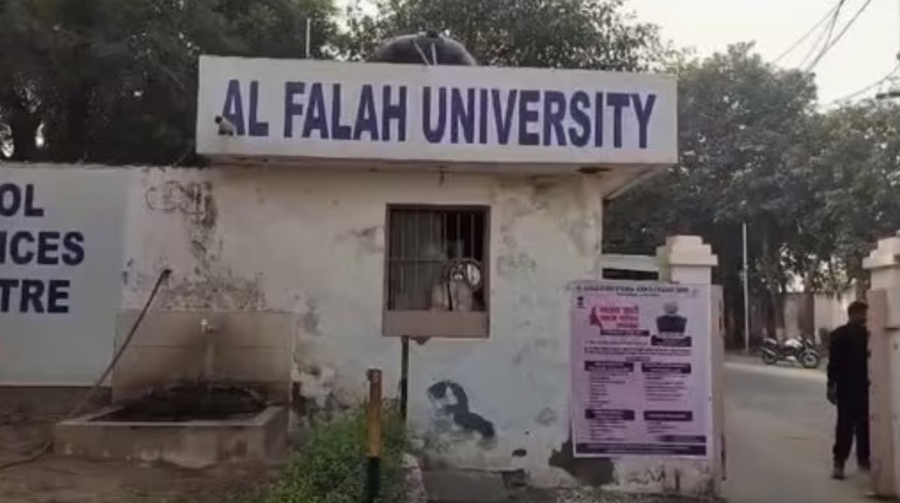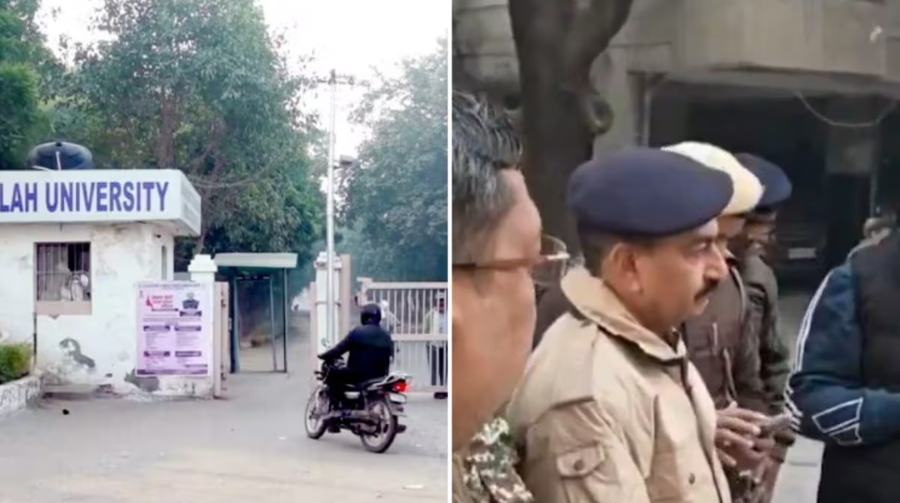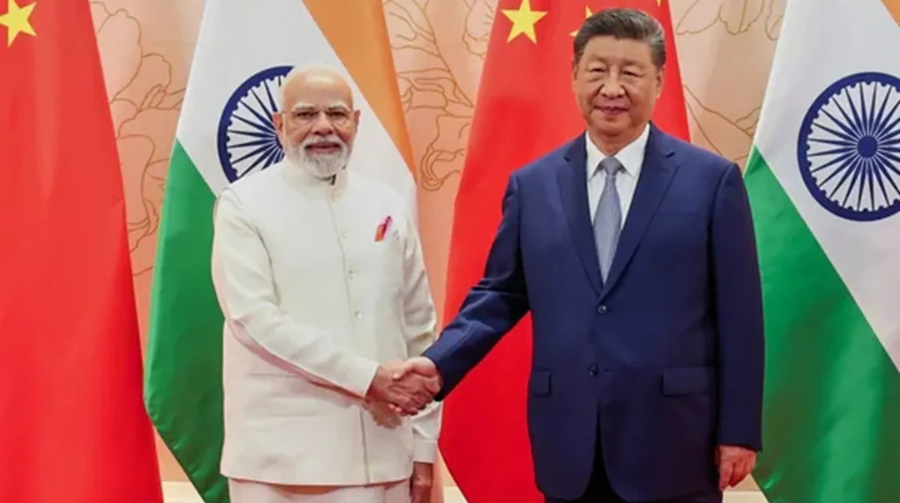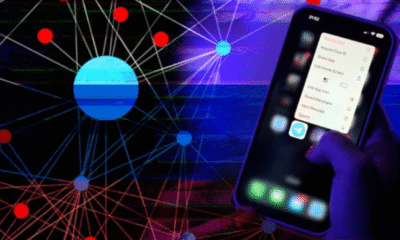News
Trump announces $2,000 ‘dividend’ to Americans, says ‘people against tariffs are fools’

Washington:
US President Donald Trump has once again defended his controversial tariff policy, asserting that the aggressive trade levies introduced under his administration have transformed the United States into the “richest” and “most respected” country in the world. Calling critics of tariffs “fools,” Trump announced that every American — except high-income individuals — would soon receive a “dividend of at least $2,000 per person” from the revenues generated by tariffs.
Trump’s bold claim: ‘People against tariffs are fools’
In a post on his Truth Social platform, Trump wrote:
Trump added that his administration’s trade policies have triggered record investment across the US, stating that “plants and factories are going up all over the place” and promising that “a dividend of at least $2,000 per person (not including high-income people)” would be paid to all Americans from tariff revenues.
A screenshot of his Truth Social post shared by media outlets shows Trump describing the initiative as a way to directly return “tariff income” to citizens, positioning it as a populist economic move ahead of the 2025 election season.

Tariffs and economic nationalism
Since his return to office, Trump has consistently defended his trade protectionist stance, arguing that tariffs safeguard American jobs, industries, and national security. He claims the policy has not only revived domestic manufacturing but also attracted global businesses to relocate operations to US soil.
“Businesses are pouring into the USA only because of tariffs,” Trump said, framing the policy as the cornerstone of America’s new economic strength.
However, economists remain divided. While supporters argue that tariffs encourage local production and reduce dependency on foreign markets, critics say they increase consumer prices and strain international trade relations, especially with key partners like China, the European Union, and Canada.
Trump questions presidential powers over trade
In a fiery follow-up post, Trump also challenged the limits of presidential authority in imposing tariffs, referencing ongoing legal battles in the US Supreme Court.
He criticized what he described as “double standards” in trade law and claimed that “other countries can tariff us, but we can’t tariff them,” calling it “their dream.”

Supreme Court reviews legality of Trump-era tariffs
Trump’s comments come just days after the US Supreme Court began hearing arguments regarding the legality of the sweeping tariffs imposed during his previous term, including those on steel, aluminum, and imports from major economies like China and the EU.
The case, viewed as one of the most consequential economic disputes in recent years, will determine whether the president has the constitutional authority to impose global tariffs without explicit congressional approval.
According to CNN, several justices — including Amy Coney Barrett, Neil Gorsuch, and Brett Kavanaugh — expressed skepticism over the scope of presidential power used to justify those tariffs. Justice Barrett notably questioned why the tariffs applied “reciprocally” to countries that were not direct threats to national security.
Administration remains confident
Treasury Secretary Scott Bessent, who attended the hearing, characterized the matter as an “economic emergency” requiring decisive executive action. Meanwhile, White House Press Secretary Karoline Leavitt reaffirmed the administration’s confidence in the legality of Trump’s measures.

What the $2,000 ‘dividend’ could mean
While details about the proposed “tariff dividend” remain unclear, Trump’s announcement signals a populist effort to turn tariff revenue into direct benefits for American citizens — similar in tone to stimulus checks issued during past economic crises.
Economists, however, warn that such payments would depend on the volume and sustainability of tariff collections, which could fluctuate depending on global trade dynamics and retaliatory measures from other nations.
If implemented, the policy could mark the first direct redistribution of tariff revenue to US citizens in modern history — a move likely to stir both economic debate and political momentum ahead of the 2026 midterm elections.
Key Takeaways
- Trump announced a $2,000 per person dividend to be paid from tariff revenues.
- He defended his aggressive tariff policy, calling critics “fools.”
- The Supreme Court is currently reviewing the legality of his global tariffs.
- The administration insists tariffs make the US “richer, stronger, and more self-reliant.”
- Economists remain divided on whether tariffs truly benefit average Americans.
News
Delhi blast case: ED raids over 25 locations linked to Al-Falah University as probe widens

The investigation into the deadly car bomb blast near Delhi’s Red Fort intensified on Tuesday as the Enforcement Directorate (ED) launched coordinated raids at more than 25 locations linked to the Al-Falah group across Delhi-NCR. The searches, which began around 5:15 am, form part of a wider probe into suspected financial irregularities, shell company operations and alleged money laundering linked to the evolving terror module.
According to officials, the ED’s teams also raided the Okhla office of Al-Falah University, besides premises associated with its trustees, faculty members, and connected entities. Several individuals linked to the institution — including Dr Umar Un Nabi, the key suspect who allegedly drove the explosive-laden car on the day of the blast — have been under the scanner.
🔶 Forensic Audit Ordered; Financial Network Under Scrutiny
Following early investigative leads, the government has ordered a comprehensive forensic audit of the university’s financial and administrative records. Multiple agencies—including ED, the Income Tax Department and specialised financial intelligence units—are now cross-examining evidence to map fund flows and detect potential misuse of accounts or diversion of money.
Sources indicate that agencies are focusing on individuals holding critical financial and administrative roles, as inconsistencies have emerged regarding fund management, staffing records and documentation associated with linked companies.

🔶 Nine Shell Companies Under Scanner
During the search operations, investigators identified nine suspected shell companies connected to the institution. Major red flags observed include:
- Companies registered at the same address with no staff or physical presence.
- Common or recycled mobile numbers and email IDs used across multiple entities.
- No EPFO/ESIC records despite claims of large-scale operations.
- Common directors/signatories, with weak or inconsistent KYC details.
- Bare-minimum salary transfers with no real HR activity.
- Similar incorporation timelines and frequently shared contact data.
Preliminary findings suggest these companies may have been created to route funds, conceal financial trails or facilitate questionable transactions possibly linked to the blast conspiracy.
🔶 Fear and Uncertainty Grips Al-Falah Campus
As the institution emerges at the centre of the suspected white-collar terror module, anxiety has spread among students and faculty. The raids coinciding with the ongoing examination period has further complicated the situation.
According to sources quoted by PTI, while the administration is attempting to maintain normalcy in classes and hostels, several students have already returned home, fearing further disruptions or escalation in the probe.

🔶 University Chairman Summoned
Delhi Police have issued two summons to Chairman Javed Ahmad Siddiqui regarding ongoing investigations into the Faridabad terror module and two separate cases involving alleged forgery and cheating by university-linked individuals.
Officials believe Siddiqui’s statement is crucial to explain discrepancies observed in the institution’s structures, its financial ecosystem and the activities of persons associated with the university during the timeline of the conspiracy.
🔶 Amit Shah: “Culprits will be traced from the depths of Patal”
Union Home Minister Amit Shah vowed that those responsible for the blast will be tracked down and punished with the “strictest legal action”. He reiterated that under the leadership of Prime Minister Narendra Modi, the government is committed to eradicating terrorism from its roots, and no perpetrator or sponsor will be spared.

🔶 Background: The Red Fort Car Bomb Blast
On November 10, a high-intensity blast ripped through a parked Hyundai i20 near Gate No. 1 of the Red Fort Metro Station. The explosion killed 13 people, injured more than 20, and burned several nearby vehicles.
The blast created panic across central Delhi, prompting a multi-agency investigation. The Union Cabinet has officially classified the incident as a terror attack, directing agencies to pursue the case with “utmost urgency, coordination and professionalism.”
🔶 What Happens Next?
With raids expanding and multiple agencies joining the probe, investigators are now focused on:
- Tracing the funding network behind the explosion.
- Verifying the role of the suspected shell companies.
- Examining the involvement of academic or administrative personnel.
- Identifying foreign or interstate money routes, if any.
- Establishing whether the blast is part of a larger planned terror module.
Senior officials have hinted that more arrests and raids are likely as the probe deepens.
News
🔥 Thick Smoke Fills Air as Massive Fire Erupts at Dyeing Company in Maharashtra’s Bhiwandi | VIDEO

A massive fire broke out at a dyeing company in Bhiwandi’s Saravali MIDC industrial area early Friday afternoon, sending thick plumes of smoke billowing into the sky and triggering panic among workers and nearby residents.
Fire tenders from Bhiwandi, Thane, and Kalyan fire stations rushed to the spot and are currently engaged in extensive firefighting operations. Fortunately, no casualties or injuries have been reported so far, officials confirmed.
🚒 Fire Details and Current Situation
According to preliminary information from local fire officials, the fire was first reported around 11:15 a.m. from a dyeing and textile manufacturing unit located within the Saravali MIDC (Maharashtra Industrial Development Corporation) estate — an area known for housing several small- and medium-scale textile and chemical units.
Eyewitnesses said they heard a loud noise before noticing dense black smoke rising from the building. The intensity of the flames reportedly spread rapidly due to the presence of flammable chemicals and fabric materials inside the premises.
⚠️ Authorities on High Alert
Local police and disaster management teams have cordoned off the affected area to prevent people from gathering near the site.
Officials from the Thane Municipal Corporation (TMC) and MIDC Fire Department have confirmed that at least six to eight fire tenders are currently working to douse the flames.
Water tankers and firefighting foam units have also been deployed to prevent the fire from spreading to adjacent industrial buildings.
📹 Visuals from the Site
Videos shared by news agency ANI and local reporters show massive flames engulfing the upper portions of the dyeing unit as fire officials attempt to control the situation. The dense smoke cloud could reportedly be seen from several kilometers away, including parts of Kalyan and Thane.
(Watch the viral video below — caution: viewer discretion advised.)
[Embed video placeholder — “Massive fire at dyeing company in Bhiwandi’s Saravali MIDC area. Firefighters on site; no injuries reported so far. (Video: ANI)”]

🧯 Possible Cause of the Fire
While the exact cause of the fire is yet to be determined, initial assessments suggest it may have started due to either:
- A short circuit in the factory’s power line, or
- Overheating of machinery used in the dyeing process.
An official investigation has been launched by the Bhiwandi Fire Department and local police, who will also assess whether fire safety protocols and equipment were in place at the unit.
📍 About Saravali MIDC, Bhiwandi
The Saravali MIDC industrial area, located about 10 km from central Bhiwandi, is a key textile and chemical hub in Thane district. It houses more than 200 small- and medium-scale factories, including dyeing, weaving, and garment units.
Despite repeated incidents of industrial fires in the region over the years, many factories still operate in densely packed structures, raising concerns over fire safety compliance and emergency preparedness.
🗣️ Officials’ Statement
A senior fire officer from Bhiwandi Nizampur Municipal Corporation told India TV Digital:
Local authorities have advised residents to avoid the Saravali MIDC area until operations conclude, as smoke levels remain high.

🧠 Safety Reminder
This incident serves as another reminder of the fire hazards prevalent in industrial zones and the urgent need for regular inspections, safety drills, and installation of automated fire suppression systems.
In the past five years, over a dozen industrial fires have been reported in the Bhiwandi and Thane belt, largely due to electrical faults or chemical mishandling.
📅 Summary: What We Know So Far
| Key Detail | Information |
|---|---|
| Location | Dyeing company, Saravali MIDC, Bhiwandi (Thane district, Maharashtra) |
| Date | November 7, 2025 |
| Time of Incident | Around 11:15 a.m. |
| Cause | Yet to be confirmed (suspected short circuit or machinery fault) |
| Casualties | None reported so far |
| Response Units | 6–8 fire tenders from Bhiwandi, Thane, and Kalyan |
| Current Status | Fire under control; cooling operations ongoing |
| Source of Visuals | ANI, local witnesses |
Politics
India, China Hold ‘In-Depth’ Talks on Western Border Management Amid Renewed Diplomatic Efforts

In a significant diplomatic development, India and China have once again held fresh talks aimed at improving control and management along the western section of their disputed border, signaling renewed efforts by both Asian giants to stabilize bilateral relations after years of heightened tension.
According to a statement released by the Chinese Defence Ministry, the two sides conducted “active and in-depth communication” on border management mechanisms, particularly focusing on reducing frictions and enhancing mutual trust between frontline military personnel.
An official response from India’s Ministry of External Affairs (MEA) is expected soon.
🏔️ Background: A Decade of Tension Along the Line of Actual Control (LAC)
The talks mark another step in the long process of managing tensions along the Line of Actual Control (LAC) — a de facto boundary stretching over 3,400 kilometers that divides Indian and Chinese-held territories.
Relations between the two nations hit a severe low following the Galwan Valley clash in June 2020, which resulted in the first combat fatalities on the border in over four decades. The incident led to deep diplomatic mistrust and a sharp military buildup on both sides of the LAC in Ladakh’s western sector.
Despite 20 rounds of Corps Commander-level talks and multiple Working Mechanism for Consultation and Coordination (WMCC) meetings, complete disengagement has not yet been achieved in several friction points, including Depsang Plains and Demchok.
However, in recent months, both countries have shown measured diplomatic flexibility aimed at preventing further escalation.

🤝 Latest Meeting: A Move Toward De-escalation
While specific details of the latest discussion remain undisclosed, officials familiar with the matter suggest that the focus was on improving border management and establishing new communication protocols between military commands.
Sources also indicated that the discussions might have included measures to prevent accidental face-offs, such as:
- Enhancing hotline communication between border outposts.
- Reviewing patrolling patterns in contested zones.
- Exploring the creation of buffer zones similar to those established in Pangong and Gogra areas earlier.
The timing of the meeting — just weeks after renewed bilateral air links and PM Modi’s SCO visit to China — underscores both governments’ intent to gradually normalise relations.
✈️ Signs of Thaw: Flights, Summits, and Symbolic Gestures
Earlier this week, IndiGo Airlines became the first Indian carrier to resume direct flights between India and China post-pandemic, operating the Kolkata–Guangzhou route. The Chinese Embassy in New Delhi hailed this move as a “major milestone in restoring people-to-people exchanges.”
The resumption of air connectivity follows incremental diplomatic engagements, including:
- High-level meetings at multilateral platforms such as the BRICS and SCO summits.
- Resumption of trade delegations in the pharmaceutical and tech sectors.
- Ongoing student and business visa relaxations between the two countries.
🏛️ PM Modi and President Xi Jinping’s Meeting at SCO Summit
During the SCO Summit 2025 in Tianjin, Prime Minister Narendra Modi and Chinese President Xi Jinping held a bilateral meeting for the first time in several years. The two leaders reaffirmed their countries’ commitment to maintaining peace along the border and strengthening economic cooperation.
President Xi described the two nations as the “dragon and elephant” that must “dance together for Asia’s stability and development.”
PM Modi, in turn, emphasized the importance of “mutual respect, mutual sensitivity, and mutual interests” as guiding principles for rebuilding trust.
Diplomatic analysts viewed the meeting as a symbolic reset, setting the stage for structured dialogue and possible de-escalation in border management.
🌏 Geopolitical Significance: A Pragmatic Shift
Experts believe these recent engagements reflect a pragmatic recalibration by both nations, driven by global economic headwinds, energy security challenges, and regional power balancing amid ongoing US–China rivalry.
🔍 Looking Ahead: Gradual Normalization or Strategic Pause?
While the latest talks mark a positive development, experts caution that deep mistrust remains.
Both sides continue to fortify border infrastructure and deploy advanced surveillance assets along the LAC, indicating that peace remains fragile.
However, analysts also note that regular dialogue, combined with confidence-building measures, could pave the way for a long-term border management framework, reducing the likelihood of future confrontations.
📅 Summary: Key Takeaways from the India–China Talks
| Category | Details |
|---|---|
| Meeting Focus | Border management and western sector control |
| Location | Likely via military channels in China’s western command region |
| Chinese Statement | “Active and in-depth communication held” |
| Indian Response | Awaited from MEA |
| Backdrop | Post-Galwan Valley tensions and gradual diplomatic thaw |
| Recent Development | Resumption of India–China flights (Kolkata–Guangzhou) |
| Leadership Meeting | Modi–Xi at SCO 2025 Summit, Tianjin |
| Outlook | Gradual normalization, continued dialogue |
-

 Celebrity Lifestyle6 months ago
Celebrity Lifestyle6 months agoEx-Cricketer Shikhar Dhawan Buys Ultra-Luxury Apartment Worth ₹69 Crore in Gurugram
-

 Crime & Investigation4 months ago
Crime & Investigation4 months agoDelhi Police SI Neetu Bisht Caught Taking ₹20 Lakh Bribe – Shocking Details Emerge in Corruption Probe
-

 Glamour & Entertainment5 months ago
Glamour & Entertainment5 months agoTelegram Channels Disseminating Pro‑Russian Propaganda in Poland
-

 Business5 months ago
Business5 months agoAmazon sets 30‑day relocation deadline for corporate staff—opt out by resigning in 60 days
-

 Entertainment5 months ago
Entertainment5 months agoAbhijeet & Dr Tarika Reunite in CID 2 — Fans Say ‘Clear the Misunderstanding Now
-

 Bollywood3 months ago
Bollywood3 months agoNo ₹3 Lakh Fine or 2-Year Jail: The Truth Behind the ‘Hakla’ GIF Buzz
-

 Celebrity Lifestyle5 months ago
Celebrity Lifestyle5 months agoMaha Kumbh Girl Monalisa seen in car allegedly worth ₹1 crore
-

 Education5 months ago
Education5 months agoNEET UG Controversy Explained: Paper Leak, Impersonations & Ongoing Probe




